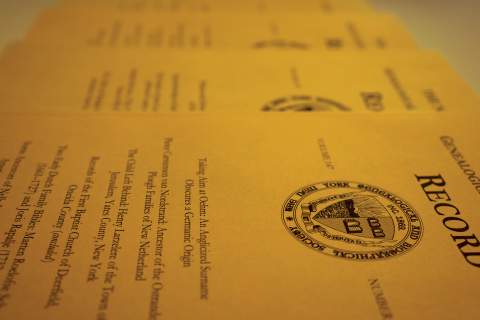In the course of your New York genealogy research, you may come across a citation or index entry that references The New York Genealogical & Biographical Record.
Some researchers will immediately wonder, “What is The NYG&B Record?”
The New York Genealogical and Biographical Record (often shortened to simply The Record, or The NYG&B Record) is the second-oldest genealogical journal in the United States, which has been publishing peer-reviewed scholarship on New York families continually since 1870.
The Record contains rare record set transcriptions, compiled genealogies, case studies, biographical sketches, and more - the names of over 1 million New Yorkers can be found within the pages of this distinguished journal.
With so much valuable material, it’s not surprising researchers find citations and index entries referring to The Record in many different locations. We have a number of freely available indexes to The Record, and many popular online indexes elsewhere contain entries pointing to it as well.
This article will show you what to do when you have uncovered a citation to The Record and want to get to the valuable information contained within the article.
The Record Citation Basics
The Record is a periodical, which means it’s a journal published at regular intervals. Each year constitutes one volume of The Record - volume 1 was published in 1870, and we’re now up to volume 150 in 2019.
Each volume consists of four issues - published in January, April, July, and October of each year.
Listings in each index will vary, but all will contain some combination of the following information about the article:
- Article title
- Article author
- Volume (1 - 150)
- Issue (1 - 4)
- Year published
- Page number
Here’s an example of a full citation (formatted according to the Chicago Manual of Style):
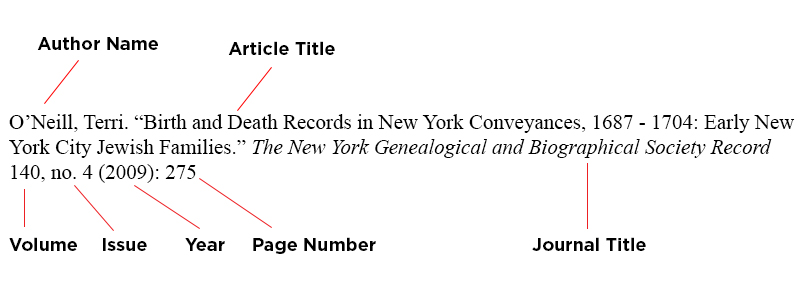
It’s important to remember that not all indexes or citations will look like this exactly, but they should all contain some of the above elements. Different authors will use different citation styles, and indexes often vary as well.
Ultimately, as long as you have the volume and page number, you’ll be able to locate the article. It’s also possible to find if the only thing you have is the article title.
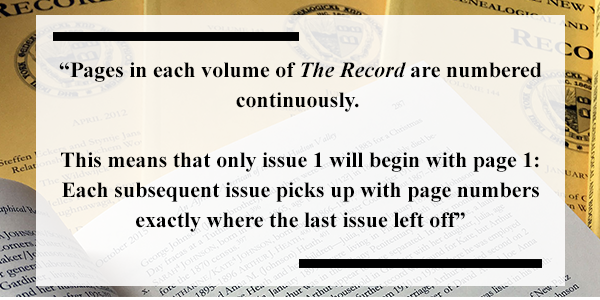
Using Citation Information to Find an Article
Now that you understand what each piece of a citation means, you can easily retrieve the actual article from our eLibrary.
Head over to our digital archive of The Record in the NYG&B eLibrary. You can follow the link in the previous sentence, or easily get there by clicking eLibrary in our main navigation menu, and finding the link to The Record on the eLibrary home page.
If you have the volume and page number from the citation or index, click the “browse” button at the top of The Record digital archive. The “browse” version of The Record archive is optimized for those who want to easily flip through an entire issue:
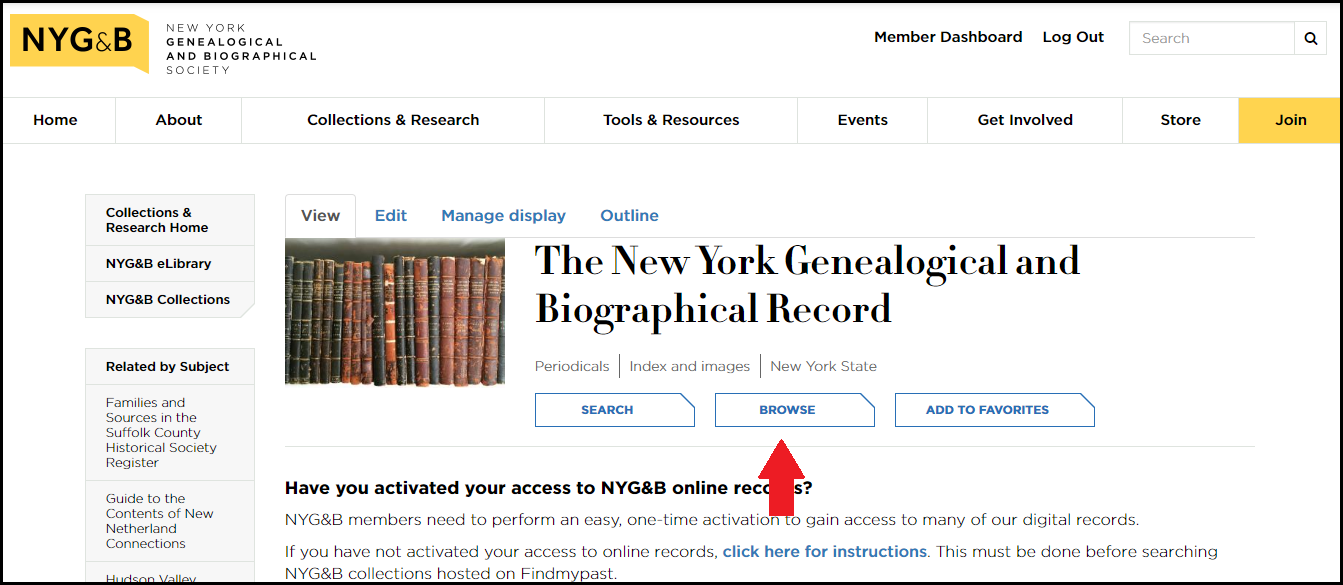
On the next screen, enter the volume in the volume field (make sure to click on the number that drops down to ensure the volume is properly applied):
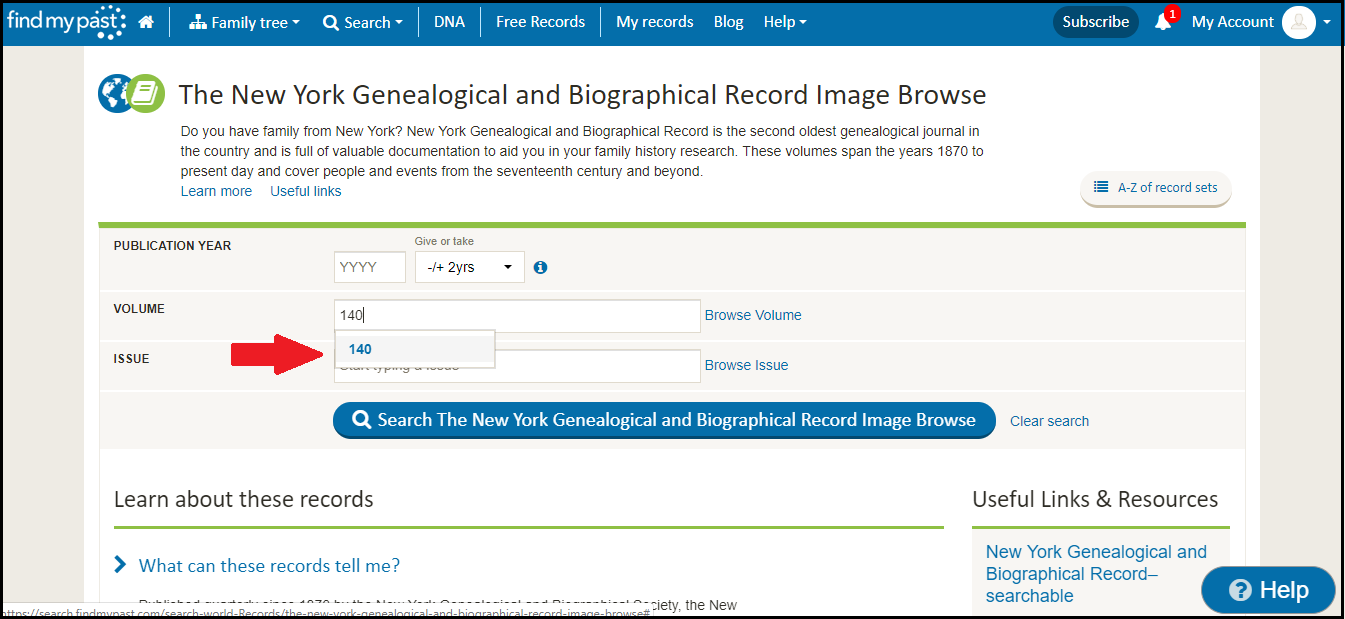
The results screen will then show each issue from that volume, along with the name index published at the end of every volume (this is the one with — in the Issue column):
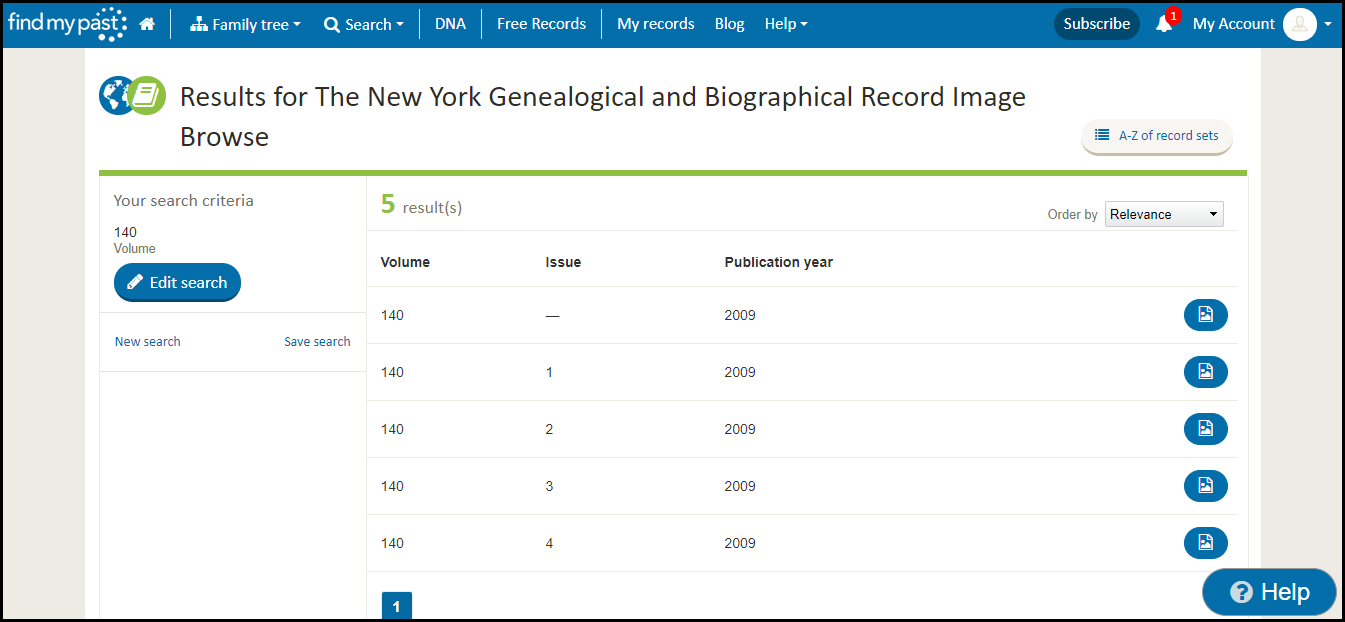
If you have the exact issue number, then it’s just a matter of finding that issue and clicking on the blue icon at the far right of its row - you’ll be taken straight to the cover page of that issue.
If you don’t have the issue number, that’s no problem - you can easily use the page number to make an estimate and get to the right issue.
Important note: One of the most important things researchers should know about The Record is that the pages in each volume are numbered continually- they do not start over at the beginning of each issue.
This means if you have the page number only, you’ll need to make an educated guess as to which issue it is. Higher page numbers will be in issues 3 and 4, and lower ones in issues 1 or 2. Click on your best guess, and navigate to table of contents to see which page numbers that issue covers.
Finding an Article Without Volume, Issue, or Page Number
If you have only an article title or author, you can still locate what you’re looking for. In this case, click the “search” button at the top of The Record eLibrary page:
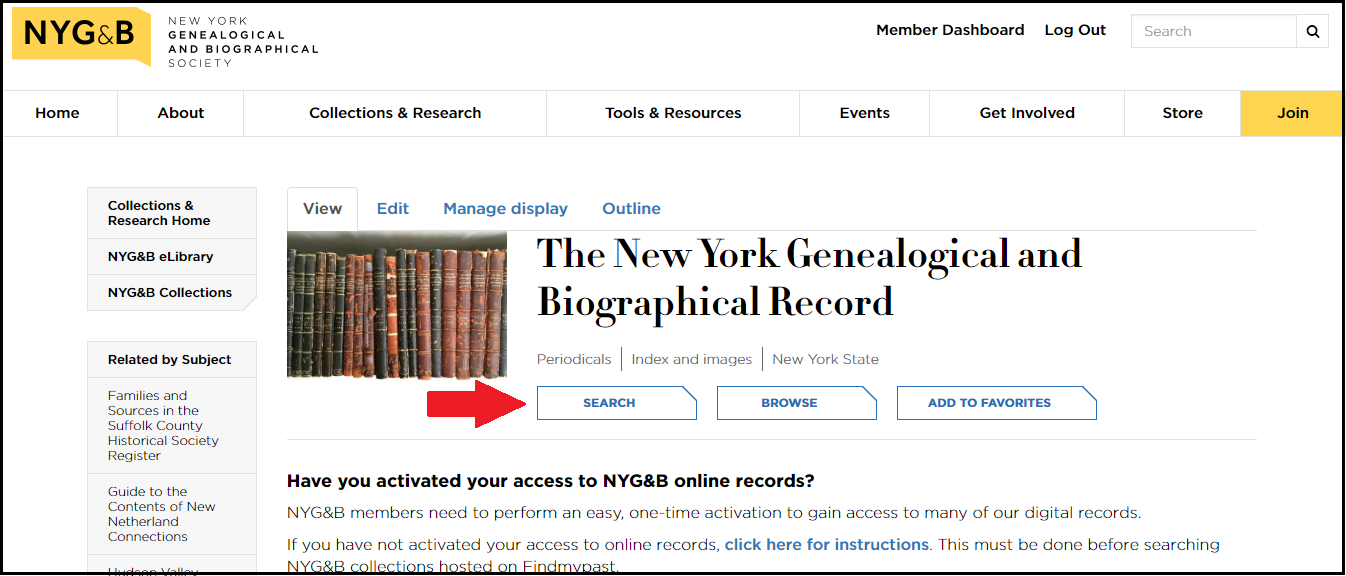
The “search” version of the record is optimized for text searches. You can search by article title, author, or even simply keyword if that’s all you have.
If you need a more in-depth demonstration of searching in the eLibrary, see the NYG&B eLibrary tutorial video.
More Genealogy Reading
- Guide to Finding New York Birth, Marriage, and Death Records
- Find a photo of any NYC Building from 1940
- Using Google Earth for genealogy: Putting your ancestors on the map
- 7 resources to get you started with genetic genealogy
- Surprising facts about immigration to New York
About the New York Genealogical and Biographical Society
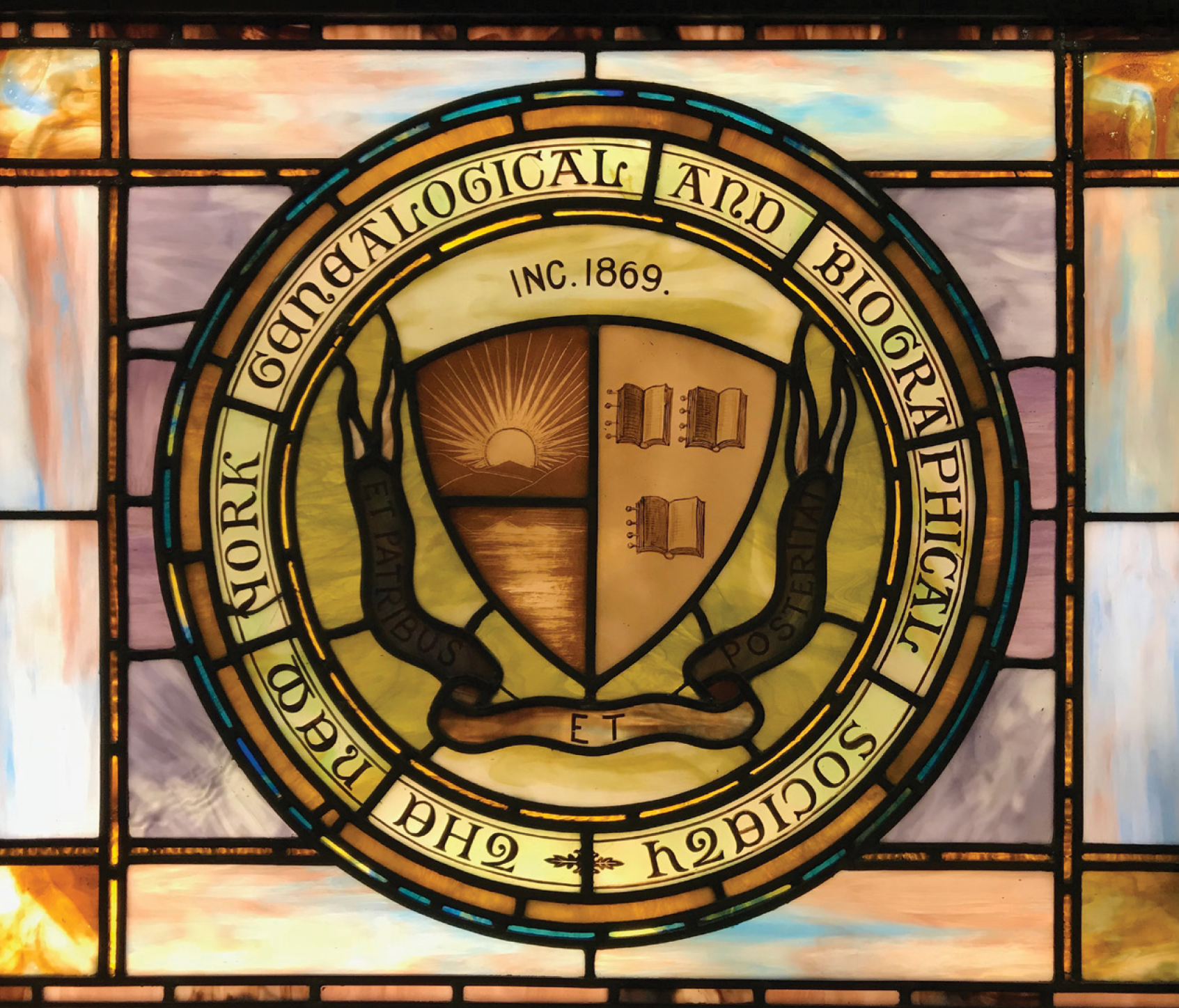
a registered 501(c)(3) organization devoted to
preserving, documenting, and sharing the history of
New York State families. Read more about our mission.
Since 1869, our mission has been to help our thousands of worldwide members discover their family's New York story, and there has never been a better time to join.
The cost of an Individual Annual Membership is less than six dollars a month, and includes the following benefits:
- Access to over 50 exclusive digital record sets covering the entire state of New York, including the fully searchable archives of The Record.
- A complimentary subscription to all of Findmypast's North American records, as well as U.K. and Irish Census records.
- Access to hundreds of expert-authored Knowledge Base articles and webinars to help you navigate the tricky New York research landscape.
- Exclusive discounts and advanced access to conferences, seminars, workshops and lectures to learn more about researching people and places across New York State.
To learn more or join us, please visit our member benefits page.
